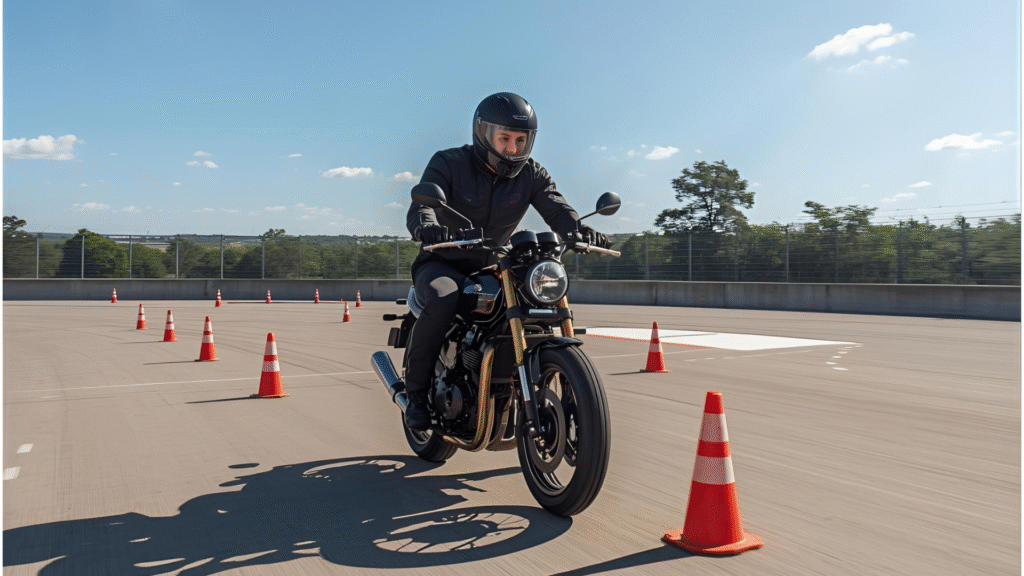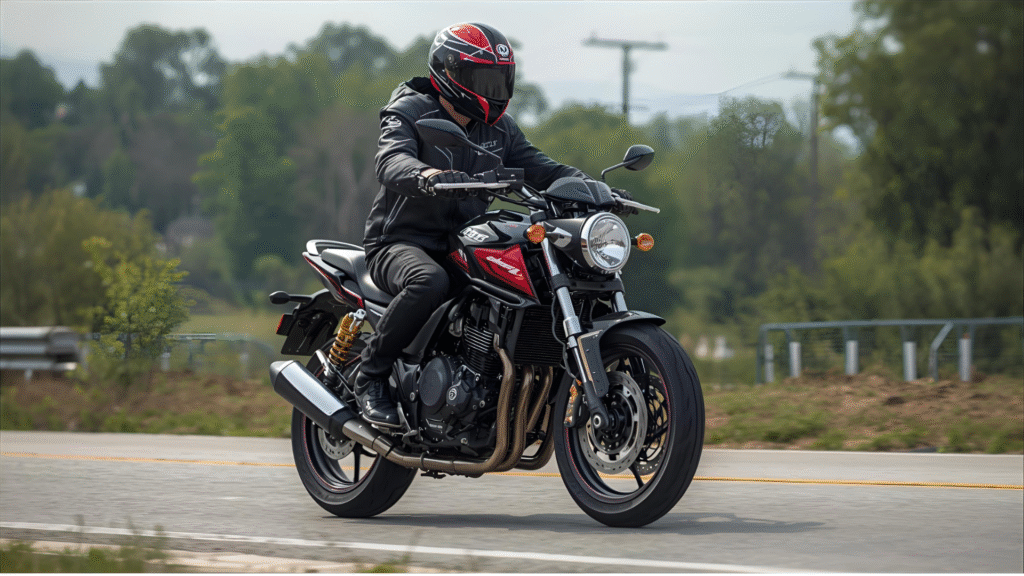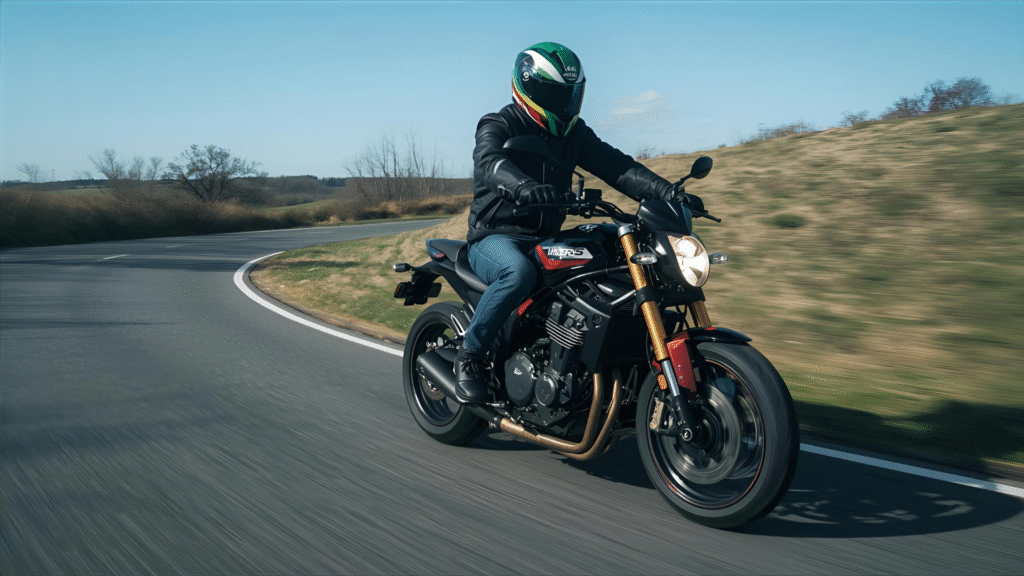Beginner Rider Mistakes: Top 10 Errors New Motorcyclists Make

Starting your motorcycle journey is exhilarating, but avoiding common beginner rider mistakes can mean the difference between a safe ride and a dangerous accident. New riders often make predictable errors that experienced motorcyclists learned to avoid through years of practice and sometimes painful lessons. This comprehensive guide reveals the top 10 beginner rider mistakes and provides actionable strategies to help you ride confidently from day one.
The Foundation of Safe Riding
Before diving into specific beginner rider mistakes, it’s crucial to understand that motorcycle safety isn’t just about avoiding crashes. Safe riding builds confidence, extends your riding career, and ensures every journey ends with you arriving home safely. New rider errors often stem from overconfidence, inadequate training, or simply not knowing what experienced riders have learned through years on the road.
Top 10 Beginner Rider Mistakes Every New Motorcyclist Must Avoid

1. Skipping Proper Training and Certification
The biggest mistake new riders make is thinking they can learn to ride without professional instruction. Many beginners assume that basic balance and throttle control are sufficient to hit the road safely.
Professional motorcycle safety courses teach essential skills that self-taught riders often miss entirely. These courses cover emergency braking, swerving techniques, and hazard recognition that could save your life. Most insurance companies also offer discounts for certified riders, making training both safer and more economical.
The Motorcycle Safety Foundation (MSF) Basic RiderCourse is the gold standard for new rider education. This course combines classroom instruction with hands-on practice, ensuring you understand both the theory and practical application of safe riding techniques.
2. Choosing the Wrong First Motorcycle
Another critical beginner motorcycle mistake is selecting a bike that’s too powerful, heavy, or complex for their skill level. Many new riders are drawn to large displacement engines or sport bikes that look impressive but are dangerous for inexperienced hands.
Your first motorcycle should prioritize learning over performance. Bikes between 250cc and 500cc offer enough power for highway riding while remaining manageable for new riders. Popular beginner-friendly options include the Honda CB300R, Kawasaki Ninja 400, and Yamaha MT-03.
Consider factors beyond just engine size when choosing your first bike. Seat height, weight, and riding position all affect your ability to control the motorcycle safely. You should be able to plant both feet firmly on the ground when stopped and reach all controls comfortably.
3. Inadequate Protective Gear Investment
One of the most dangerous new rider errors is compromising on safety gear to save money. Quality protective equipment is non-negotiable for safe riding, yet many beginners skimp on essential gear or buy inferior products.
Essential protective gear includes:
-
Motorcycle jacket with armor
-
Protective pants or riding jeans with kevlar
-
Gloves with palm sliders and knuckle protection
-
Over-the-ankle boots with sole protection
The “All The Gear, All The Time” (ATGATT) philosophy isn’t just a slogan—it’s a survival strategy. Even low-speed crashes can cause serious injuries without proper protection. Invest in quality gear from reputable manufacturers, as your safety equipment is literally your life insurance policy.
4. Poor Clutch and Throttle Control
Smooth clutch and throttle operation separates confident riders from nervous beginners. Many new riders struggle with jerky starts, stalling at intersections, or engine braking too aggressively.
Practice clutch control in a safe environment until smooth engagement becomes second nature. The friction zone—the point where the clutch begins to engage—is your best friend for smooth starts and low-speed maneuvering. Learn to modulate the throttle with small wrist movements rather than large twists.
Proper throttle control extends beyond just acceleration. Learn to use engine braking effectively by gradually closing the throttle, allowing the engine to slow the bike naturally. This technique reduces brake wear and provides better control in various riding conditions.

5. Inadequate Following Distance and Speed Management
Speed-related beginner rider mistakes account for a significant percentage of new rider accidents. Inexperienced riders often follow too closely, ride too fast for conditions, or fail to adjust speed appropriately for their skill level.
The three-second rule for cars becomes a four-second rule for motorcycles due to reduced braking capability and increased vulnerability. In poor weather or heavy traffic, increase this to six seconds or more. Remember that your stopping distance includes reaction time, brake application time, and actual braking distance.
Speed management isn’t just about staying under the posted limit. Ride at speeds that allow you to react to unexpected situations while maintaining control of your motorcycle. As a beginner, this often means riding slower than traffic flow until your skills develop.
6. Neglecting Regular Motorcycle Maintenance
Many beginner motorcycle mistakes involve overlooking basic maintenance that keeps bikes running safely. Unlike cars, motorcycles require more frequent attention to critical systems like chains, tires, and brakes.
Weekly maintenance checks should include:
-
Tire pressure and tread depth
-
Chain tension and lubrication
-
Brake fluid levels and pad thickness
-
Light functionality
-
Control cable adjustment
Learn to perform basic maintenance tasks yourself, as this knowledge helps you identify potential problems before they become dangerous. A well-maintained motorcycle is more reliable, safer to ride, and retains better resale value.
Create a maintenance schedule based on your owner’s manual and stick to it religiously. Professional service intervals are designed to catch problems before they fail, potentially saving you from roadside breakdowns or accidents.
7. Poor Cornering Technique and Body Position
Cornering separates good riders from great ones, yet it’s where many new rider errors occur. Beginners often lean the wrong way, brake in corners, or target fixate on obstacles rather than their intended path.
Proper cornering technique involves looking through the turn, leaning the bike while keeping your body relatively upright, and maintaining steady throttle through the apex. Counter-steering—pushing the handlebar in the direction you want to turn—is essential for cornering at speeds above walking pace.
Practice cornering in empty parking lots before tackling challenging roads. Start with gentle curves and gradually increase lean angle as your confidence builds. Remember that smooth inputs create smooth cornering, while sudden movements upset the bike’s balance.

8. Ignoring Weather and Road Conditions
Weather-related motorcycle riding mistakes cause numerous accidents among inexperienced riders. Rain, wind, and temperature changes dramatically affect motorcycle handling and safety, yet many beginners don’t adjust their riding accordingly.
Wet roads reduce traction by up to 50%, requiring significant changes in riding technique. Painted lines, manhole covers, and metal surfaces become extremely slippery when wet. Reduce speed, increase following distance, and avoid sudden movements when riding in rain.
Cold weather affects tire performance, battery life, and your own reaction times. Warm up both yourself and your motorcycle before riding in cold conditions. Consider investing in heated gear for comfort and safety during winter riding.
9. Lack of Situational Awareness and Defensive Riding
Perhaps the most critical beginner rider mistakes involve inadequate hazard recognition and defensive positioning. New riders often focus too intently on immediate surroundings while missing potential threats developing ahead.
Develop a scanning pattern that continuously monitors traffic, road conditions, and potential escape routes. The MSF teaches the SEE strategy: Search, Evaluate, Execute. Constantly search for hazards, evaluate their potential threat level, and execute appropriate responses.
Position yourself in traffic to maximize visibility and minimize risk. Avoid riding in other drivers’ blind spots, and assume you’re invisible to car drivers. Use lane positioning strategically to create buffer zones and maintain escape routes.
10. Riding Beyond Skill Level and Peer Pressure
The final category of new rider errors involves riding beyond current abilities, often due to peer pressure or overconfidence. Group rides, challenging roads, or simply trying to keep up with more experienced riders can lead to accidents.
Know your limits and don’t exceed them to impress others or keep pace with faster riders. Experienced motorcyclists understand that everyone progresses at different rates, and good riding companions will respect your comfort level.
Build skills gradually through practice and additional training. Consider track days or advanced riding courses to improve your abilities in controlled environments. The goal is steady improvement over time, not instant expertise.
Comparison: Beginner vs. Experienced Rider Approaches
| Situation | Beginner Mistake | Experienced Approach |
|---|---|---|
| Cornering | Brakes in turns, looks at obstacles | Smooth throttle, looks through turn |
| Following Distance | Follows too closely | Maintains 4+ second gap |
| Gear Selection | Cheap or inadequate protection | Quality ATGATT philosophy |
| Maintenance | Neglects basic upkeep | Regular preventive maintenance |
| Weather Riding | Doesn’t adjust technique | Modifies speed and positioning |
| Group Rides | Tries to keep up regardless | Rides within personal limits |
Building Long-Term Riding Skills
Avoiding beginner rider mistakes is just the first step in your motorcycling journey. Continue developing your skills through advanced training, track days, and regular practice. Join local riding groups that emphasize safety and skill development rather than just social aspects.
Consider the “30-Day Rider Confidence Blueprint” ebook, which provides structured exercises for building essential riding skills progressively. This comprehensive resource helps new riders develop confidence while avoiding common mistakes that lead to accidents.
Document your progress and regularly assess your riding skills honestly. What felt challenging last month should become more comfortable as you gain experience. This self-awareness helps you recognize when you’re ready for new challenges and when you need more practice with current skills.
Frequently Asked Questions About Beginner Rider Mistakes
Q: What are the most dangerous beginner rider mistakes that cause accidents?
A: The most dangerous beginner rider mistakes include inadequate training, poor speed management, and riding without proper protective gear. These errors significantly increase accident risk and injury severity for new motorcyclists.
Q: How long does it take to overcome common new rider errors?
A: Most riding tips for beginners suggest that basic motorcycle riding mistakes improve within the first 6 months of regular riding. However, developing advanced skills and complete hazard awareness can take years of consistent practice.
Q: Should beginners avoid riding in certain weather conditions?
A: Yes, beginner motorcycle safety guidelines recommend avoiding rain, strong winds, and extreme temperatures until you’ve mastered basic skills. These conditions amplify the consequences of new rider errors.
Q: What’s the best way to practice avoiding beginner rider mistakes?
A: The most effective motorcycle safety tips include professional training courses, supervised practice sessions, and gradually increasing challenge levels. Empty parking lots provide safe environments for practicing essential skills.
Q: How much should beginners spend on protective gear to avoid riding mistakes?
A: Quality protective gear represents a crucial investment in preventing serious injuries from beginner motorcycle mistakes. Budget at least $800-1200 for complete ATGATT protection, as this equipment can prevent life-changing injuries.
Your Next Steps to Confident Riding
Avoiding these common beginner rider mistakes sets the foundation for a lifetime of safe, enjoyable motorcycling. Remember that every experienced rider once made similar errors—the key is learning from them quickly and developing good habits early in your riding career.
Your journey to confident riding doesn’t end with avoiding mistakes; it begins with building positive skills and knowledge. The combination of professional training, quality equipment, and consistent practice creates the foundation for safe riding throughout your motorcycling career.
Ready to accelerate your learning and avoid costly beginner rider mistakes? Download our free “New Rider Safety Checklist” that covers essential pre-ride inspections, gear requirements, and skill-building exercises. This comprehensive guide helps you stay safe while building confidence on every ride.
For the complete roadmap to mastering motorcycle safety, check out our pillar article on Motorcycle Confidence: Ultimate 2025 Beginner’s Blueprint, where you’ll discover advanced techniques that experienced riders use to stay safe in any situation.